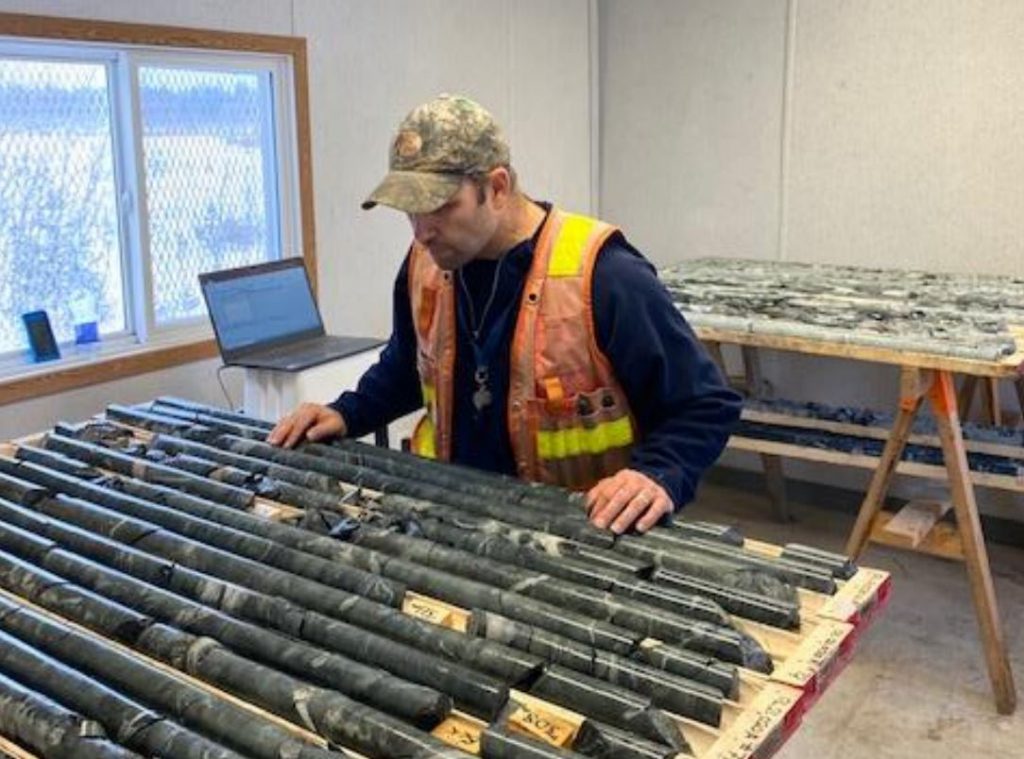Metals Creek drills 36.21 g/t gold over 2.47 metres at Dona Lake, Ontario

Metals Creek Resources Corp. [MEK-TSXV; MCREF-OTCQB; M1C1-FSE] reported additional diamond drill results from drill holes DL22-029, DL22-030 and DL22-031 of the phase 3 diamond drill program at the Dona Lake gold project, northwestern Ontario.
Hole DL22-029 continues to demonstrate the continuation of high-grade gold mineralization within the main zone stratigraphy, below the 455 level of the past producing Dona Lake Gold mine.. Hole 029 intersected the Main Zone stratigraphy 499 metres below surface and returned a core length intercept of 11.80 g/t gold over 3.66 metres (539.47-543.13m). This was a part of a broader zone of mineralization of 6.38 g/t gold over 11.33 metres (531.80-543.13m).
Mineralization was hosted within a silicate sulfide iron formation with 0.5 to 25% pyrrhotite and local pyrite with associated grunerite and garnets. Visible gold was noted in this intercept. A second zone of mineralization was intercepted 516 metres below surface, which returned a core length intercept of 36.21 g/t gold over 2.47 metres, (558.63-561.10m). This second zone of mineralization is also within the main zone stratigraphy and is separated from the noted intercept above by 11 metres of felsic dike material. It is hosted within a moderately foliated and chloritized iron formation with 1-20% pyrrhotite and 2-10% pyrite. Visible gold was also noted in this intercept.
A third zone of high-grade gold mineralization was intercepted 54 metres east (in the hanging-wall) of the main zone iron formation within quartz stockwork returning a grade of 67.10 g/t gold over 0.28 metres (470.35-470.63m). This high-grade veining was intercepted 435 metres below surface and is hosted within sheared mafic volcanic adjacent to an intermediate dike. Significant visible gold (30 specks) was observed in association with moderate alteration consisting of sericite and 1-2% disseminated pyrite.
Two additional holes were drilled testing peripheral iron formations outside the Dona Lake mine stratigraphy. These holes were planned to better define the orientation and composition of these iron formations. Hole DL22-030 tested the northwest iron formation, returning a core length intercept of 0.66 g/t gold over 9.10 metres (71.00-80.10m). Mineralization was hosted within silicate-oxide iron formation with trace to 3% pyrrhotite. Hole DL22-031 returned no significant results (NSA) within a chert-rich iron formation with local seams of massive pyrrhotite. This hole was drilled east of the Dona Lake mine.
The phase III diamond drill program has successfully defined additional high-grade gold mineralization south of the Dona Lake mine workings. Deeper drilling targeting stratigraphy below the lowermost mine workings has extended high-grade gold mineralization down plunge to a vertical depth of 753 metres. Recently reported drill hole DL22-025 returned a high-grade down hole intercept of 8.11 g/t over 9.51 metres. This hole represents the deepest hole to date on the Dona Lake property with gold mineralization remaining open at depth.
True thickness is 70-80% of drill intercept length.
The Dona Lake Gold Project was 100%-optioned from Newmont Corp. [NGT-TSX; NEM-NYSE] and is located in the Pickle Lake Greenstone Belt which is host to several historic mines including the Dona Lake mine, the Central Patricia mine and the Pickle Crow mine. Dona Lake is accessible by an all-weather road southeast from the Town of Pickle Lake. The Project consists of 32 patented and leased mining claims and 35 map staked claims totaling approximately 1,122 hectares and covers the past producing Dona Lake Mine.
